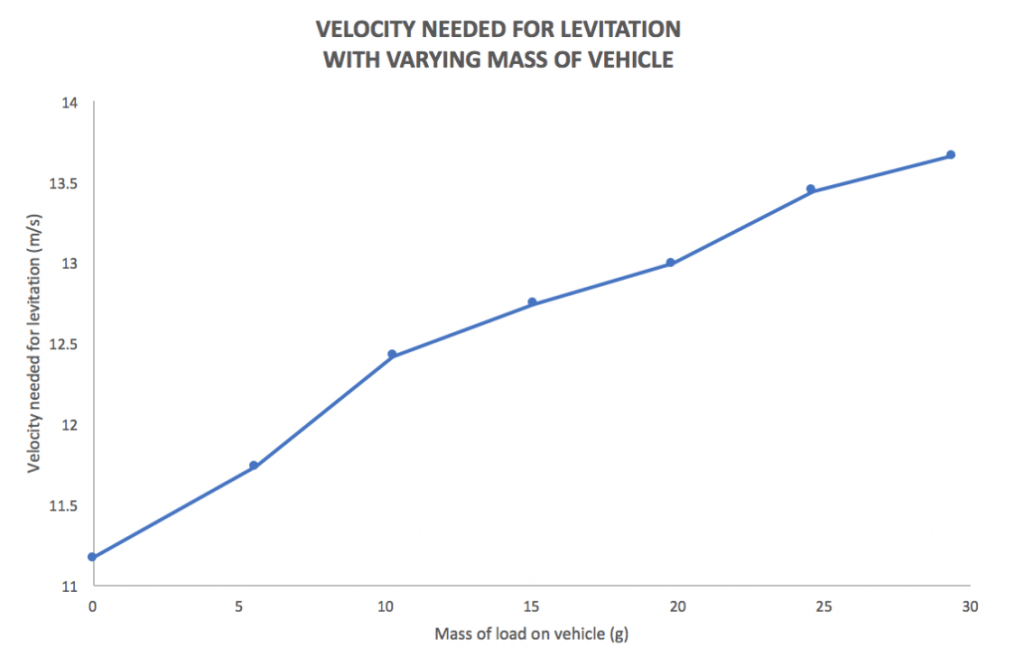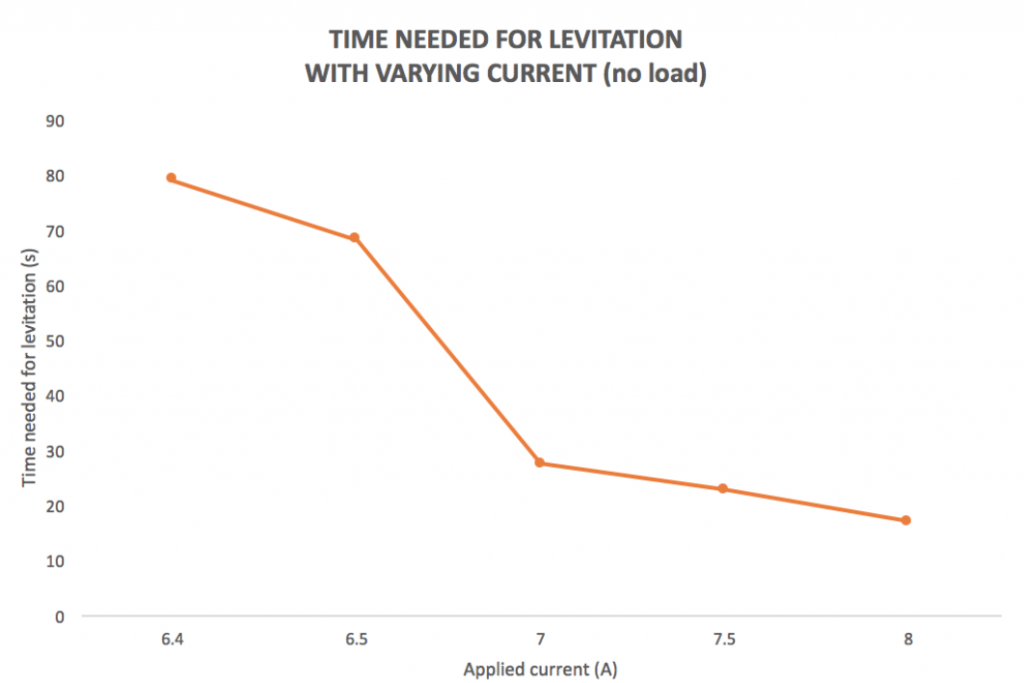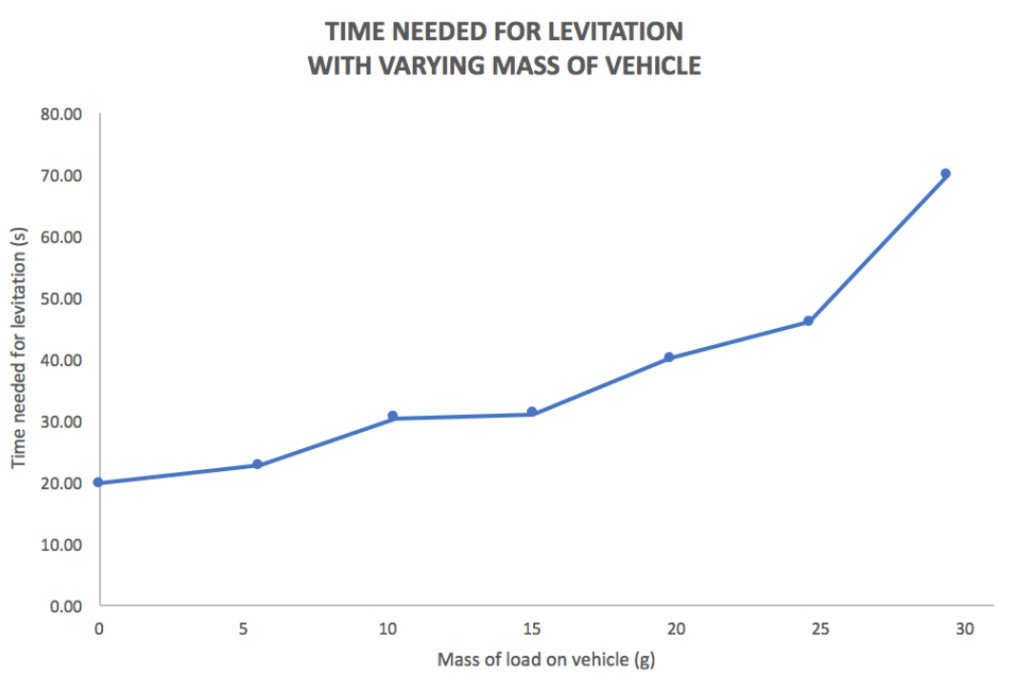Using our setup, we did some testing. The results obtained are below.
Levitation is defined as the vehicle stabilising at a 1 mm above its original position.
Vehicle mass with no added load to it is 80 g.

By varying the added load to our 80-gram vehicle, we were able to measure the minimum velocity the track needed to spin relative to the vehicle before levitation of 1 mm was observed. Without load (i.e. the vehicle alone), a minimum velocity of about 11.2 m/s was needed, tallying with our solutions obtained via COMSOL. Here, we see an almost direct relationship between the added mass and velocity required for 1 mm levitation, from 0 to 30 g added load.
However, it is worth noting that beyond an added load of 30 g (total mass 110 g), levitation of less than 1 mm occurs.

Without any added weight to the vehicle, we tried to vary the applied current (in Amperes) to the track to see if that would affect time needed for levitation of 1 mm above original position.
Here, we see that less time is needed with a higher applied current. A possible reason for this trend is the higher power provided by the higher applied currents allowing the track to overcome magnetic drag more quickly and easily. Hence, this allows the track to achieve the required speed it should move relative to the vehicle for the vehicle to levitate.

By adding different masses to the vehicle, we studied how that affected the time needed for a 1 mm levitation. It is seen that more time is needed for that to happen as the mass of load increases. Levitation of less than 1 mm is observed beyond 30-gram added load (i.e. total mass = 110 g).
